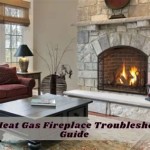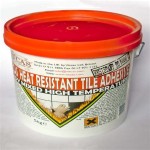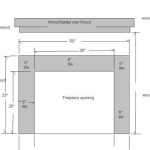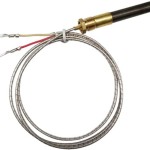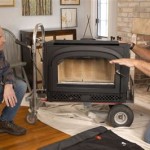Can You Put A Wood Burning Insert In A Prefab Fireplace? Understanding the Considerations
The question of whether a wood-burning insert can be installed into a prefabricated fireplace is one that many homeowners face when seeking to improve the efficiency and aesthetics of their existing fireplace setup. Prefabricated fireplaces, also known as factory-built or zero-clearance fireplaces, are designed and manufactured as complete units, often installed during initial construction or remodeling. Wood-burning inserts, on the other hand, are designed to be placed inside an existing fireplace, typically a masonry fireplace, to increase heating efficiency and reduce emissions. The compatibility between these two systems is not always straightforward and requires careful consideration of safety regulations, manufacturer specifications, and installation guidelines.
The desire to install an insert into a prefab fireplace often stems from a dissatisfaction with the heating performance of the prefab unit. Many prefab fireplaces are primarily decorative, offering limited heat output and often allowing significant heat loss through the chimney. A wood-burning insert, designed with a closed combustion system, can significantly improve heat transfer to the room and reduce the amount of heat escaping up the chimney. However, simply placing an insert into a prefab fireplace without proper evaluation and adherence to appropriate standards can create a serious safety hazard.
The primary concern is the compatibility of the insert with the prefab fireplace unit and its venting system. Prefab fireplaces are tested and listed as complete systems, meaning the fireplace unit and chimney are designed to work together. Altering this system by adding an insert, which generates a different heat profile and exhaust characteristics, can compromise the safety and efficiency of the entire setup. It is crucial to understand the potential risks and necessary precautions before considering such an installation.
Key Point 1: Manufacturer Specifications and Listing Requirements
The single most important factor in determining whether an insert can be installed into a prefab fireplace is the manufacturer's specifications for both the fireplace and the insert. Prefab fireplaces are typically listed by testing laboratories such as UL (Underwriters Laboratories) or Warnock Hersey. This listing includes specific instructions regarding permissible modifications or additions to the fireplace system. These instructions are paramount and must be strictly adhered to.
Most prefab fireplace manufacturers explicitly prohibit the installation of wood-burning inserts unless the insert is specifically listed and approved for use within their particular fireplace model. This approval typically involves rigorous testing to ensure the insert does not overheat the fireplace unit, compromise the structural integrity of the chimney, or create unsafe exhaust conditions. Attempting to install an insert that is not specifically approved voids the fireplace's listing and can invalidate any homeowner's insurance coverage in the event of a fire or other related incident.
Furthermore, the insert itself must also be listed and labeled. The listing will specify the types of fireplaces the insert is approved for use in, and will dictate the required venting system. Often, an insert designed for a masonry fireplace will require a full reline of the existing chimney with a stainless-steel liner of the appropriate diameter. This liner is crucial for containing the hot exhaust gases and preventing condensation, which can lead to creosote buildup and chimney fires.
Therefore, before even considering an insert, homeowners must thoroughly review the manufacturer's documentation for their prefab fireplace. If the documentation does not explicitly allow for the installation of an insert, or if it only allows for specific models that are no longer available, then installing an insert is generally not a safe or permissible option. Contacting the fireplace manufacturer directly or consulting with a qualified hearth professional is highly recommended to obtain accurate information and guidance.
Key Point 2: Venting System Compatibility and Safety
The venting system is a critical component of any fireplace system, and its compatibility with a wood-burning insert is paramount for safe and efficient operation. Prefab fireplaces are typically designed with a specific chimney system that is tested and listed as a complete unit. These chimneys are often constructed of lightweight materials and are not designed to withstand the higher temperatures and corrosive byproducts associated with wood-burning inserts.
Installing an insert often requires a complete relining of the existing chimney with a stainless-steel liner designed for wood-burning applications. This liner provides a dedicated flue for the insert, protecting the original chimney from excessive heat and corrosive gases. The liner must be properly sized to match the insert's exhaust requirements and must be installed according to the manufacturer's instructions.
It is also important to consider the potential for condensation within the venting system. Wood-burning inserts can produce significant amounts of water vapor, which can condense on the cooler surfaces of the chimney. This condensation, combined with other combustion byproducts, can form creosote, a highly flammable substance that can lead to chimney fires. A properly sized and insulated chimney liner can help to minimize condensation and creosote buildup.
Connecting an insert to a prefab fireplace's existing chimney without a proper liner can create a dangerous situation. The higher temperatures and corrosive gases can damage the chimney, leading to cracks, leaks, and potential structural failure. This can expose combustible materials in the home to high temperatures, posing a significant fire hazard. Furthermore, improper venting can lead to poor draft, causing smoke and carbon monoxide to back up into the house.
Therefore, a thorough inspection of the existing chimney and a careful evaluation of its compatibility with the proposed insert are essential. A qualified chimney sweep or hearth professional can assess the condition of the chimney and recommend the appropriate venting solution. Using a properly sized, listed, and installed chimney liner is crucial for ensuring the safe and efficient operation of the wood-burning insert.
Key Point 3: Alternative Heating Options and Considerations
If the manufacturer's specifications prohibit the installation of a wood-burning insert into the prefab fireplace, and a safe and compatible venting system cannot be established, homeowners should explore alternative heating options. These options may include replacing the existing prefab fireplace with a new, more efficient model, installing a freestanding wood stove, or considering alternative fuel sources such as gas or electric fireplaces.
Replacing the prefab fireplace with a newer model that offers improved heating efficiency and modern features can be a viable option. Many newer prefab fireplaces are designed with advanced combustion technologies that maximize heat output and minimize emissions. These units are often easier to install and maintain than wood-burning inserts, and they can provide a significant improvement in heating performance.
Freestanding wood stoves offer another alternative for supplemental heating. These stoves are designed to heat a specific area and can be more efficient than traditional fireplaces. However, they require more space and may not be suitable for all homes. It is important to ensure that the wood stove is properly sized for the area to be heated and that it is installed according to local building codes.
Gas and electric fireplaces offer the convenience of instant heat and require minimal maintenance. Gas fireplaces can provide a realistic flame appearance and offer a good balance of heat output and energy efficiency. Electric fireplaces are a convenient option for supplemental heating and can be installed in virtually any room. However, they typically do not provide the same amount of heat as wood-burning or gas fireplaces.
In addition to considering alternative heating options, homeowners should also focus on improving the energy efficiency of their homes. This can include adding insulation, sealing air leaks, and upgrading windows and doors. By reducing heat loss, homeowners can lower their heating bills and minimize the need for supplemental heating.
Ultimately, the decision of whether to install a wood-burning insert into a prefab fireplace should be based on a careful evaluation of safety regulations, manufacturer specifications, and installation guidelines. If the installation is not explicitly permitted and a safe and compatible venting system cannot be established, homeowners should explore alternative heating options to ensure the safety and comfort of their homes.

Installing Inserts Into Prefab Fireplaces Arlington Tx Black Velvet

New Wood Burning Prefab Fireplaces Complete Fireplace Installs

New Wood Burning Prefab Fireplaces Complete Fireplace Installs

Time To Replace Wood Burning Prefab Fireplace Greenville Sc Blue Sky

Zero Clearance Vs Prefabricated Fireplace Full Service Chimney

Fireplace Installation Full Service Chimney Serving Kansas City Area

Woodland Park Co Prefab Fireplace Wood Burning Installation

Fireplaces Vs Inserts Dc Area Fireplace Service

All About Prefabricated Fireplaces Chimney Savers

Woodland Park Co Prefab Fireplace Wood Burning Installation
Related Posts

